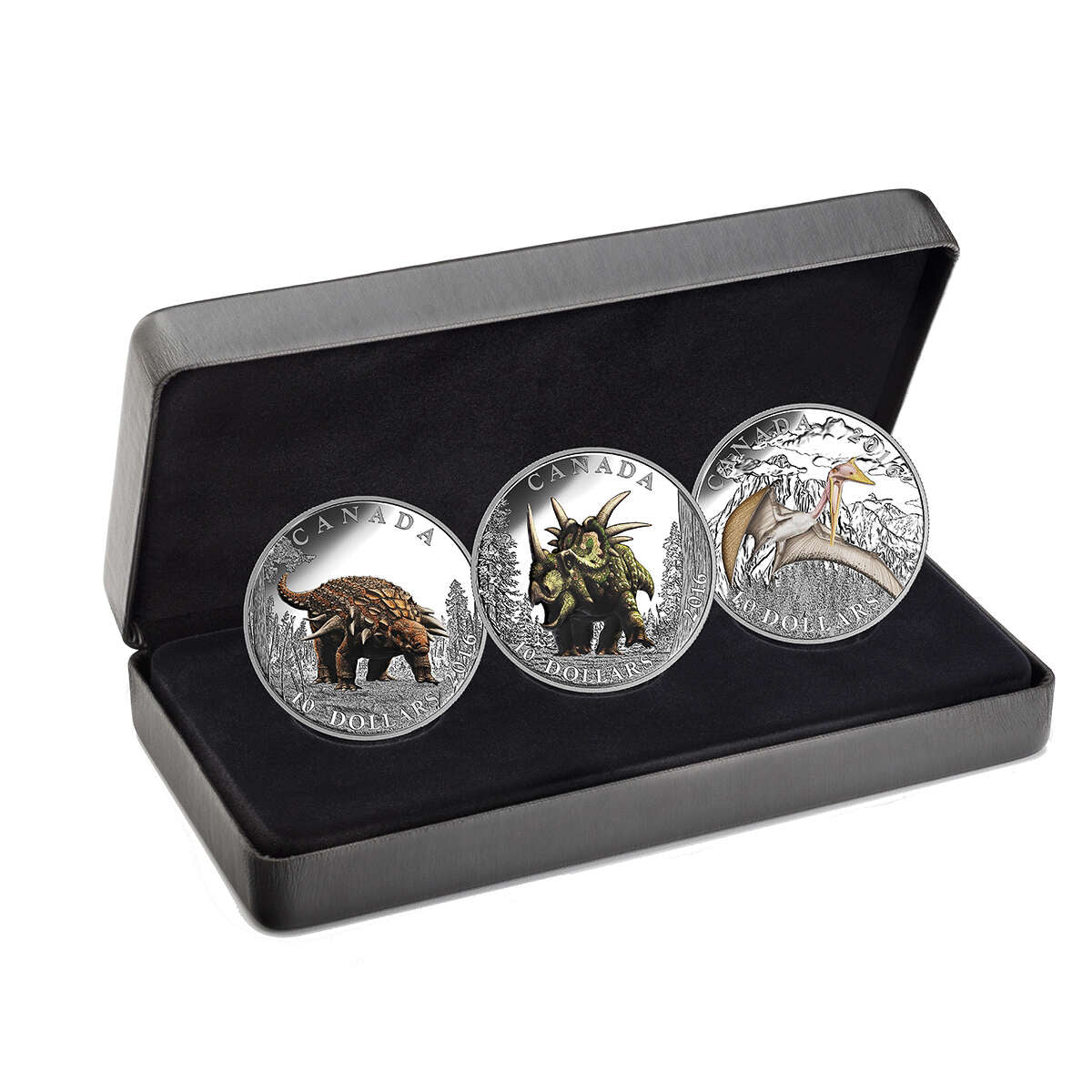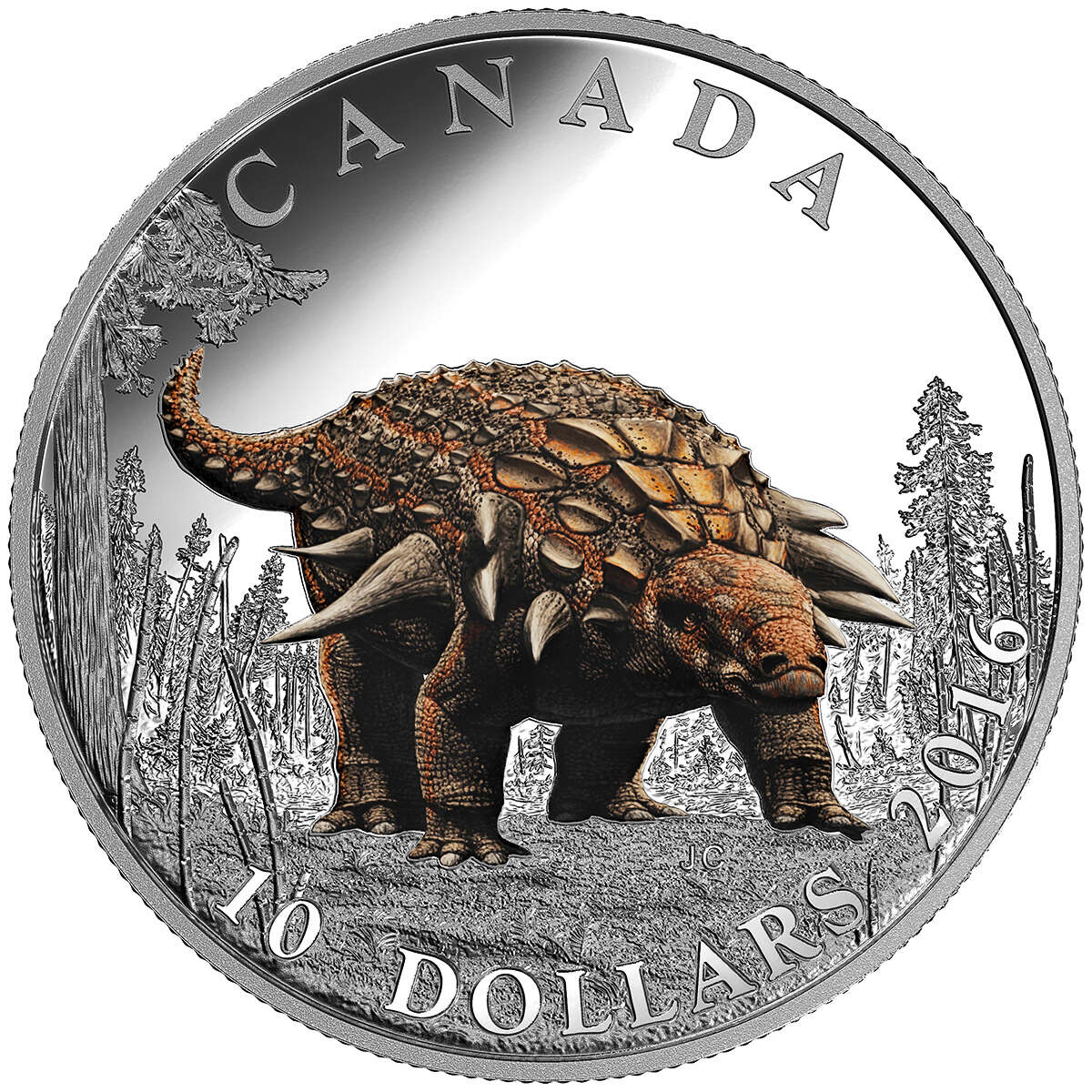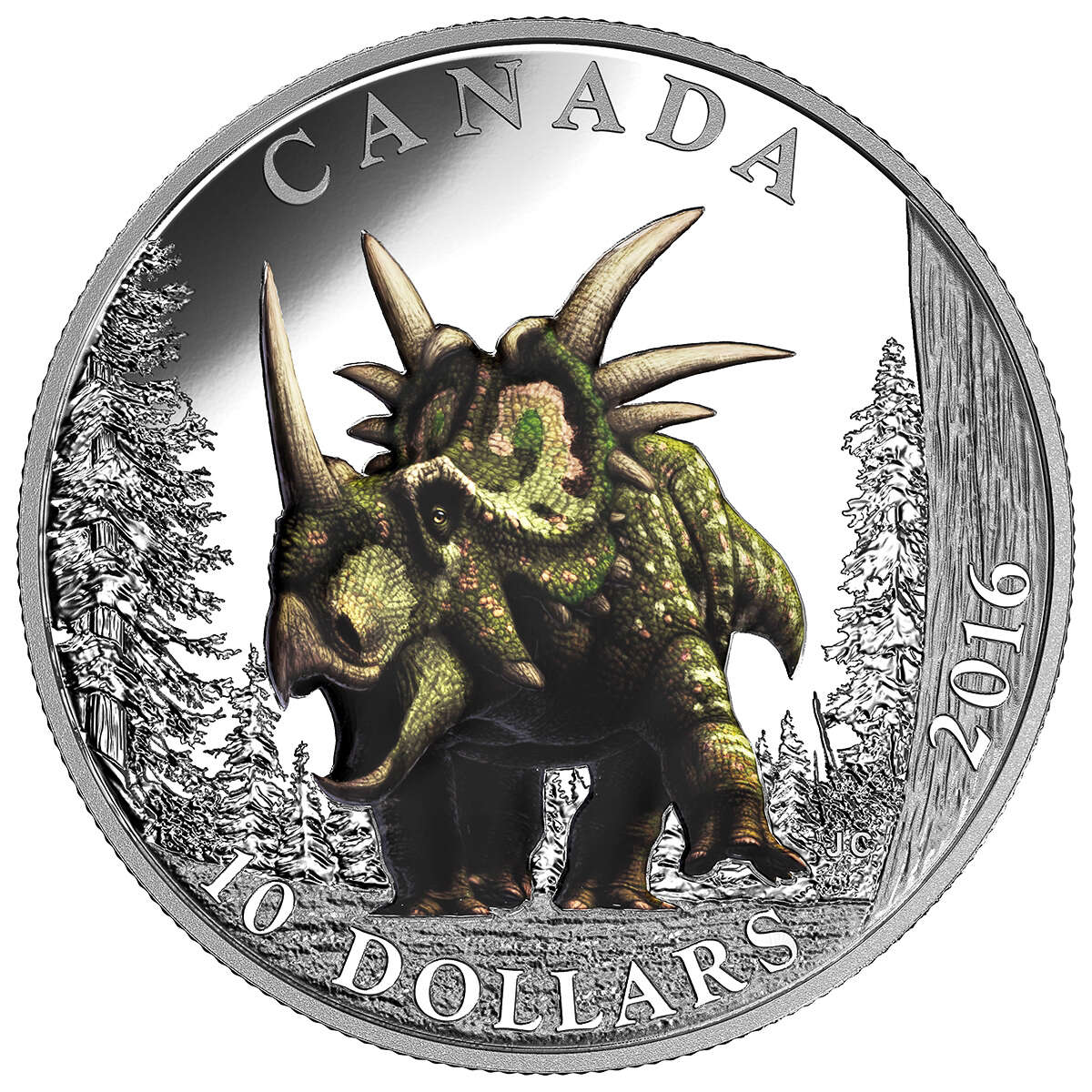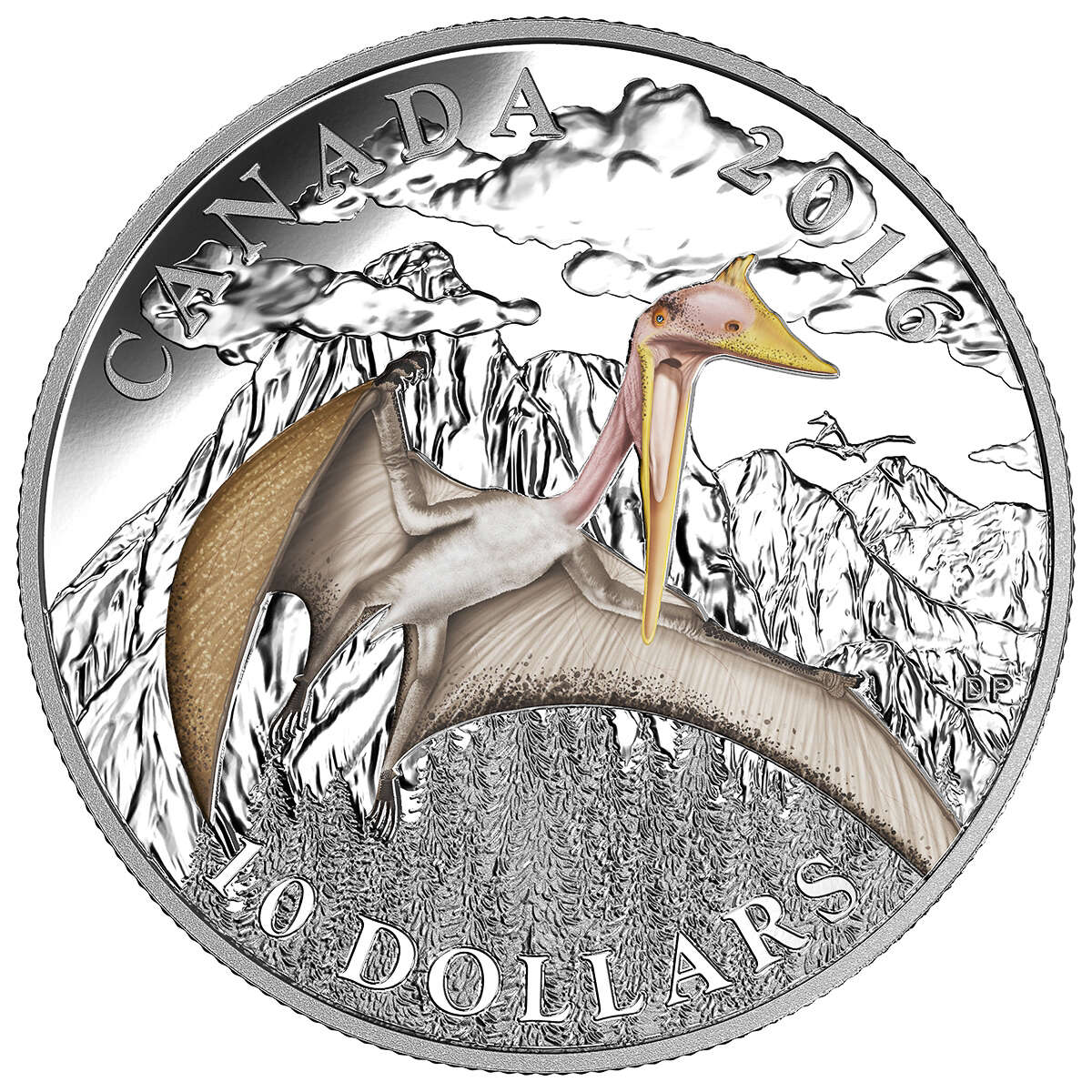Description
The prehistoric creatures that roamed the land before us inspire a mix of awe, curiosity and even fear. This three-coin series captures some of their fiercest and most wondrous attributes. Mintage for each coin is 10,000, HST/GST exempt.
Quetzalcoatlus "The Terror of the Sky":
The reverse design by Canadian artist Dino Pulera features an intricately engraved rendition of how the largest known creature to ever possess flying abilities, the Quetzalcoatlus likely appeared, and was reviewed for scientific accuracy by paleontologist at the Royal Tyrrell Museum of Paleontology. The use of selective colour brings this long-gone species to life in incredible detail; soaring with only an occasional flap of its enormous wings, the terrifyingly large reptile keeps one wing bent towards the viewer while the left wing is outstretched. Its long, pointed beak is open wide, releasing a cry into the wind as it prepares to swoop down to find prey. The coin’s own silver surface recreates radiant rays of bright sunlight peeking through the clouds above the distant mountains, which convey how high the plane-sized creature would soar above the conifer forest below.
Styracosaurus "The Spiked Lizard":
With a long nasal horn—and six more horns that extend out from behind its neck frill—the stout Styracosaurus cuts quite the formidable figure for an herbivore! This “spiked lizard” of the Late Cretaceous period is the subject of the second coin in the continuing Day of the Dinosaurs series, which showcases the wondrous, even fearsome qualities of Canada’s prehistoric creatures.
Edmontonia "The Armoured Tank":
With a heavily armoured body, Edmontonia was equipped to protect itself if attacked. This ankylosaur was one of the last armoured herbivores of the Late Cretaceous period; now, selective colour brings this species back to life once more as part of a series that highlights the fearsome qualities of Canada’s prehistoric creatures.
An artistic way to learn more about the species whose fossils connect us with a distant past, and the way Canada’s landscape has evolved over millions of years.






